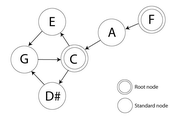Information
- Publication Type: Bachelor Thesis
- Workgroup(s)/Project(s):
- Date: December 2013
- Date (Start): 15. October 2012
- Date (End): 20. December 2013
- Matrikelnummer: 0725136
- First Supervisor: Stefan Ohrhallinger
- Keywords: feature extraction, music, visualization
Abstract
The aim of this bachelor’s thesis is to point out ways on how to extract distinct bits of information out of a song and how to combine them to create single parameters that reflect the currently transported emotion of the song. It presents approaches on how to extract certain information and data from MIDI and audio files that can then be used to create a more physics-based and naturally feeling visualization than the one that gets shipped with today’s common music player software, with a strong focus on MIDI. For example, the currently used scale should have an impact on the visualization’s color, as well as the current tempo, dynamic or aggressivity. Representing these attributes as input parameters that can be used by a visualization application should ultimately result in a better visualization experience for the viewer, because it creates a feeling that the things seen on screen match with the music currently playing. Besides defining such input parameters for visualizations, this paper also provides a short evaluation of music feature extraction libraries and frameworks that help in reaching the men- tioned goal, as well as a few concrete implementations of algorithms that can be used to extract such features based on the jMusic API framework.Additional Files and Images
Weblinks
No further information available.BibTeX
@bachelorsthesis{hauer_alex-2013-ba,
title = "Physics-based Music Visualization",
author = "Alex Hauer",
year = "2013",
abstract = "The aim of this bachelor’s thesis is to point out ways on
how to extract distinct bits of information out of a song
and how to combine them to create single parameters that
reflect the currently transported emotion of the song. It
presents approaches on how to extract certain information
and data from MIDI and audio files that can then be used to
create a more physics-based and naturally feeling
visualization than the one that gets shipped with today’s
common music player software, with a strong focus on MIDI.
For example, the currently used scale should have an impact
on the visualization’s color, as well as the current
tempo, dynamic or aggressivity. Representing these
attributes as input parameters that can be used by a
visualization application should ultimately result in a
better visualization experience for the viewer, because it
creates a feeling that the things seen on screen match with
the music currently playing. Besides defining such input
parameters for visualizations, this paper also provides a
short evaluation of music feature extraction libraries and
frameworks that help in reaching the men- tioned goal, as
well as a few concrete implementations of algorithms that
can be used to extract such features based on the jMusic API
framework.",
month = dec,
address = "Favoritenstrasse 9-11/E193-02, A-1040 Vienna, Austria",
school = "Institute of Computer Graphics and Algorithms, Vienna
University of Technology ",
keywords = "feature extraction, music, visualization",
URL = "https://www.cg.tuwien.ac.at/research/publications/2013/hauer_alex-2013-ba/",
}
 image
image thesis
thesis
